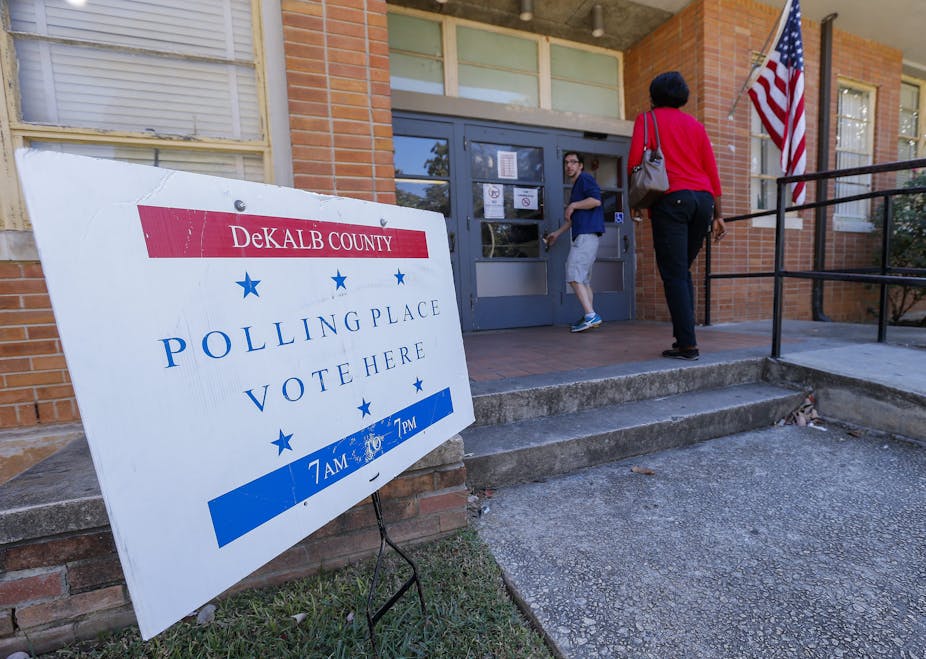Despite popular opinion, American voters on Election Day are not voting for the president. They are merely indicating a preference for whom they would like to see become president.
Voters are in fact, voting for “Electors” to represent their state in the US Electoral College. It is these Electors who cast the vote to decide who is elected president.
According to the United States Archives, these Electors to the Electoral College are chosen prior to Election Day by the political parties of each state – usually at state party conventions, or by the party’s state committee.
Electors are chosen in recognition of their service to the party and may be elected officials, party leaders, or people in the state who have some affiliation with the party’s presidential candidate.
There is no constitutional or federal legal requirement for Electors to vote according to the voters of their state.
In the 1952 case of Ray vs Blair, the US Supreme Court ruled that states could choose to apply a penalty to Electors who did not follow the wishes of the voters. That could be by issuing a fine, or voiding that Elector’s vote in the Electoral College.
As a result of that case, Electors in 25 of the country’s 50 states, plus the District of Columbia, are bound by state law or party pledge to cast their vote in the Electoral College based on the result of the general election.
This means that the Electors of the remaining half of the states are free to ignore the vote on Election Day, and instead cast their vote in the Electoral College for whomever they wish. They may even vote contrary to the outcome of the general election. Electors who do this are known as “faithless electors”.
In other words, if Hillary Clinton wins New York, there is no requirement for that state’s Electors to vote for her in the Electoral College, and they could – in theory – vote for Trump.
You may be surprised to learn that this has happened on 21 occasions in America’s history, including nine times since 1945.
Notable cases of faithless electors
In 2004, John Edwards was the Democratic vice presidential running mate of John Kerry. But an Elector from Minnesota cast their ballot for Edwards rather than Kerry.
A similar instance occurred in 1988, when an Elector from West Virginia cast their vote for the Democratic vice presidential nominee, Lloyd Bentsen, instead of Michael Dukakis.
In 1976, rather than vote for Republican Gerald Ford, an Elector from Virginia cast their vote for Ronald Reagan – despite Reagan not being on the general election ballot.
Hillary Clinton will not be the first woman to receive an Electoral College vote. In 1972, instead of supporting the Republican ticket of Richard Nixon and Spiro Agnew, a Republican Elector voted for the Libertarian Party. Thus, Theodora Nathan, the Libertarian vice presidential candidate, won an Electoral vote.
It’s not all doom and gloom. Or is it?
It may be somewhat reassuring to learn that the Electoral College has never elected someone president who would not otherwise have won. However, the fact is they could.
Imagine the following scenario. Donald Trump narrowly wins the election by the same Electoral College margin as George Bush over Al Gore in 2000: 271 to 266. Rather than see “President Trump”, the Electors of South Dakota could instead vote for Clinton. That would see the Electoral College result change from to 268 to 270, thus denying Trump victory and handing it to Clinton.
It is entirely possible, and legal.
So how did it come to this? The so called “Founding Fathers” of the US Constitution – a small group including George Washington, Thomas Jefferson and Alexander Hamilton – had little confidence in voters’ ability to elect the “right” person. So they developed a fail safe mechanism that could be used in case voters got it “wrong”.
Perhaps former UK Prime Minister Winston Churchill was echoing these sentiments with his attributed quote: “The best argument against democracy is a five minute conversation with the average voter.”
When looking back at 2016, some future scholars and historians may well think him correct.

